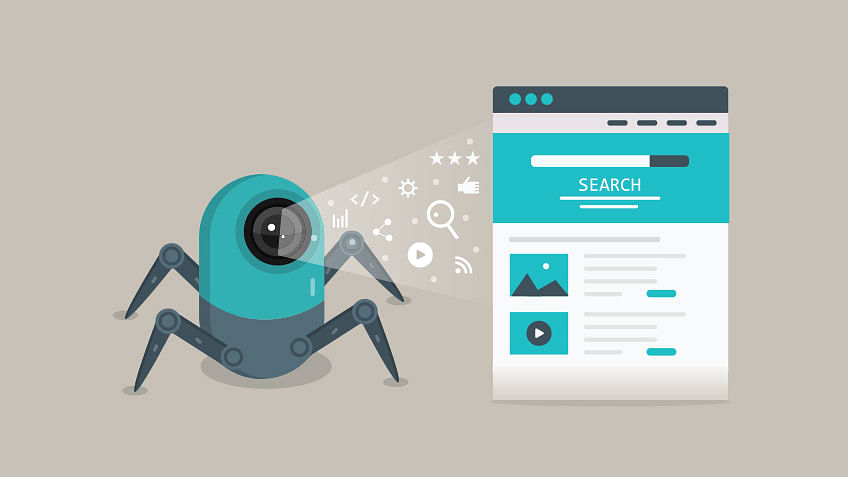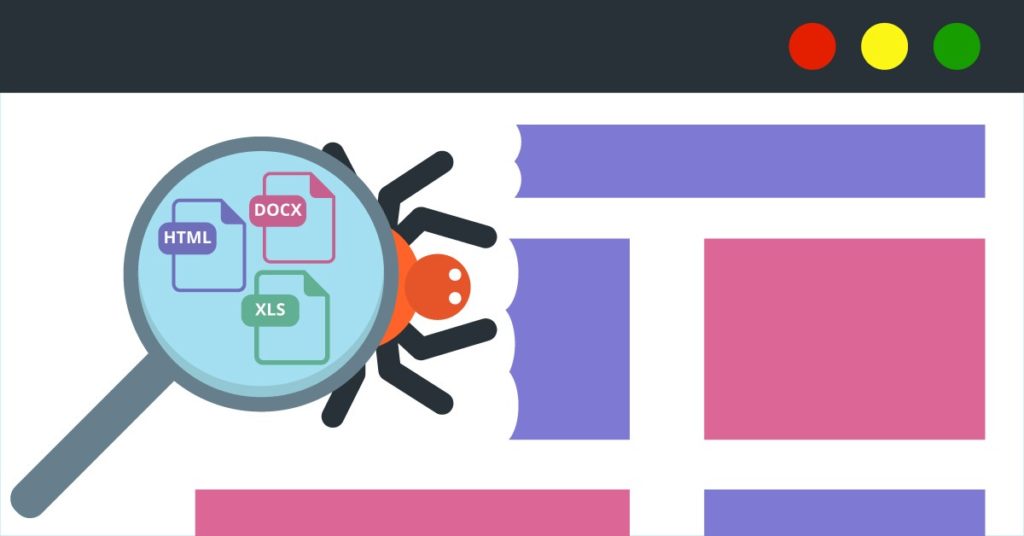Build A Web Crawler- We live in the digital age, and we have access to an enormous amount of data.
Using this data, we can gain a deeper understanding of how we work, play, learn, and live.
Wouldn't it be great to be able to acquire more specific information about a specific topic?
Have you ever wondered how search engines like Google gather data from various sections of the internet and present it to you as a user depending on your query?
Crawling is the approach employed by programs like this.
Search engines function by scanning and indexing billions of online pages with various web crawlers known as web spiders or search enginebots.
These web spiders explore links from each indexed web page to discover new ages.
Web crawlers, or programs that read information from web pages, have a wide range of uses.
Scraping can be used to obtain stock information, sports scores, text from a Twitter account, or pricing from retail websites.
It's easier than you think to write these web crawling apps.
Python offers an excellent module for creating programs that extract data from websites.
Let's have a look at how tobuild a web crawler.
What Is A Web Crawler?
Web crawlers, often known as spider bots, are internet bots that explore the whole Internet for material before indexing it.
This is how search engine crawlers operate.
Because we are not creating a search engine, the data obtained by our crawler will not be indexed (at least not yet).
Crawlers ingest and extract data from the pages they crawl and prepare it for usage.
Depending on the user's use scenario.
Crawlers may also be used for data-driven programming and site scraping.
Each web crawler's goal is to understand what each web page is about and to offer it when it is required or requested.
It automatically visits a webpage and consumes and downloads its data through software programs.
Why Do You Need A Web Crawler?
Consider the world without Google Search.
How long do you think it will take to find a chicken nugget recipe on the Internet?
Every day, 2.5 quintillion bytes of data are produced online. It will be like looking for a needle in a haystack without search engines like Google.
A search engine is a type of web crawler that scans websites and discovers web pages on our behalf.
Aside from search engines, you can also create a customized web crawler to aid in the success of your website.
How Do They Differ From Web Scrapers?
They are both bots for online data extraction.
Online scrapers, on the other hand, are more streamlined and specialized employees created for extracting particular data from a specified and defined list of websites, such as Yelp reviews, Instagram posts, Amazon pricing data, Shopify product data, and so on.
This is not the case with web crawlers, as they are fed a list of URLs and are supposed to locate more URLs to crawl on their own, following some set of criteria.
Marketers use the phrases interchangeably because web scrapingis engaged in the process of web crawling – and some web scrapers integrate parts of web crawling.
How To Build A Web Crawler?
We expect you to understand what web crawlers are based on the information provided above.
It is now time to learn how to create one for yourself.
Web crawlers are computer programs developed in any of the available general-purpose programming languages.
A web crawler can be written in Java, C#, PHP, Python, or even JavaScript.
This means that being able to write in any of the general-purpose programming languages is the most important need for constructing a web crawler.
Build A Web Crawler With These Two Major Steps
One of the first steps in creating a web crawler is to download the online pages.
This is difficult because several things must be considered, such as how to better exploit local bandwidth, how to minimize DNS queries, and how to relieve server load by assigning web requests in a reasonable manner.
Following the retrieval of the web pages, the HTML page complexity analysis is performed. In truth, we are unable to align all HTML web pages.
And now we have another problem.
When AJAX is utilized everywhere for dynamic websites, how do you obtain the material created by Javascript?
Furthermore, the Spider Trap, which is common on the Internet, might send an unlimited amount of queries or force a badly written crawler to collapse.
While there are many aspects to consider while developing a web crawler, most of the time we merely want to design a crawler for a certain website.
As a result, we should conduct an extensive study on the structure of target websites and collect some important connections to keep watch of in order to avoid excessive costs on redundant or trash URLs.
Also, if we can establish an appropriate crawling path regarding the web structure, we might try to just crawl what we are interested in from the target page by following a specified sequence.
For example, suppose you want to crawl the contentof mindhack.cn and you've discovered two sorts of sites that you're interested in:
1. Article List, such as the main page or a URL beginning with /page/d+/, and so on.
We discovered that the link to each article is an "a Tag" under h1 by checking Firebug.
2. Article Content, such as /2008/09/11/machine-learning-and-ai-resources/, which contains the whole article.
As a result, we may begin with the main page and collect further links from the entrance page — wp-pagenavi.
We need to specify a path specifically: we simply follow the next page, which implies we may tour all the pages from beginning to end and be free of a repeating judgment.
Then there are the specific article links within.
Some Tips For Crawling
Crawl Depth- The number of clicks the crawler should make from the entrance page. A depth of 5 is usually sufficient for crawling from most websites.
Distributed Crawling- entails the crawler attempting to crawl several pages at the same time.
Pause- The amount of time the crawler waits before moving on to the next page.
The quicker you set the crawler, the more demanding the server will be (at least 5–10 seconds between page hits).
The URL template determines which pages the crawler needs data from.
Save log- A saved log will keep track of which URLs have been visited and which have been transformed into data.
It is useful for debugging and to avoid crawling a previously visited site again.
People Also Ask
What Is The Major Requirement Of A Crawler?
Before being released on the internet, every data crawler must meet two fundamental requirements: speed and efficiency.
The architectural design of web crawler programs or auto bots is involved.
A well-defined architecture is essential for web crawlers to perform perfectly, just as a hierarchyor smooth design is required for any completely functional organization to run smoothly.
Web crawlers should thus use the gearman model, which includes supervisor sub crawlers and many worker crawlers.
What Is Parallel Crawler?
A parallel crawler is one that runs numerous processes at the same time.
The aim is to increase download pace while minimizing parallelization overhead and avoiding repeated downloads of the same page.
To avoid downloading the same page twice, the crawling system requires a policy for allocating new URLs discovered during the crawling process, because the same URL might be discovered by two distinct crawling processes.
Is Web Crawler A Good Project?
In the SEOmarket, there is a high demand for useful web scraping technologies.
This is an amazing project if you want to use your technical talents in digital marketing.
It will also familiarize you with data science applications in internet marketing.
Aside from that, you'll learn about the various ways to use web scraping for search engine optimization.
Conclusion
You should now have a rudimentary understanding of how web crawlers and web scrapers function, how to build a web crawler, and how they are used in conjunction with search engines to gather data from the web.
Web scraping was utilized by data scientists and AI developers to obtain a large amount of data for various data analytics and training models.
Another thing to keep in mind is that the crawler's running time can be lengthy depending on the number of URLs detected, however, this can be reduced by multithreading.
You should also keep in mind that complicated web crawlers for real-world projects will necessitate a more organized approach.


